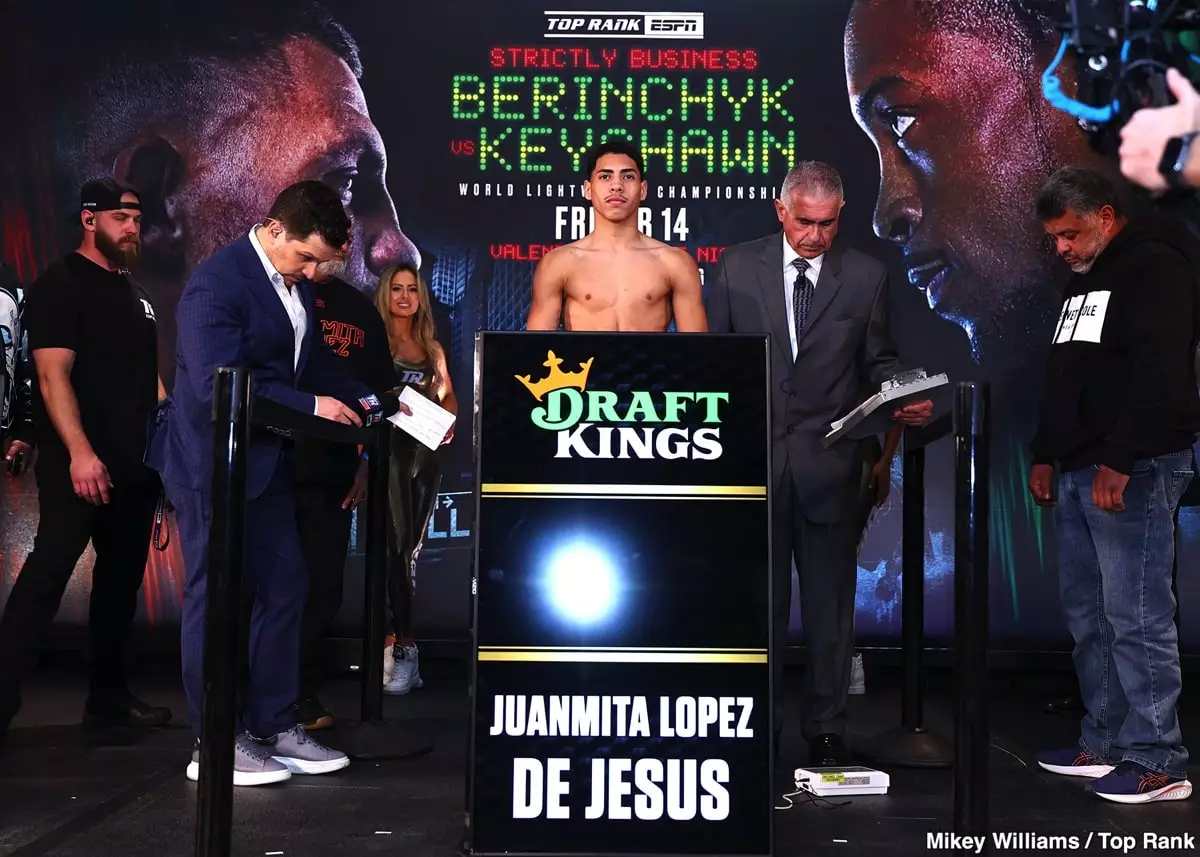In recent years, the intersection of sports and social issues has become increasingly prominent, particularly regarding the pervasive presence of racism. The world of boxing is no exception, as evidenced by the recent controversy surrounding Keyshawn Davis, who received a racially charged message just ahead of his highly anticipated match against Denys Berinchyk. This event, scheduled for Valentine’s Day at the Madison Square Garden Theater, exemplifies the ongoing challenges athletes face not merely as competitors in the ring, but as representatives of their communities and cultures.
The incident involving Davis serves as a painful reminder of how deeply ingrained racist sentiments persist within society, often unaddressed and dismissed as mere trolling. This alarming trend has drawn criticism, especially when it manifests during prominent sporting events. Many within the boxing community opted to downplay the severity of Davis’s experience, suggesting it was part of a larger narrative aimed at stirring controversy for promotional purposes. This response is deeply disheartening and showcases a fundamental misunderstanding of the real-life implications of such hateful behavior.
Historical comparisons, such as the remarks made by Bernard Hopkins about never losing to “a white boy,” have been brought into discussions about this incident. However, it is crucial to differentiate between pre-fight bravado and overt racism. While some athletes have historically engaged in trash talk that borders on racially insensitive, Davis’s situation presented a different and more dangerous reality. Davis later believed that the message originated from a source outside of Berinchyk’s camp, highlighting the complexities and miscommunications surrounding the issue.
As fight night approaches, anticipation builds for the tactical showdown between Davis and Berinchyk. Analysts expect Berinchyk to establish an early lead, likely employing a strategy rooted in fainting and jabbing to test Davis’s reactions. Known for his agility and ability to maneuver around foes, Berinchyk’s footwork will be pivotal in creating opportunities to strike while maintaining distance.
Davis, on the other hand, is known for his slow start, preferring to study his opponent’s movements and strategies before engaging. His ability to switch stances can be both an asset and a liability, depending on how effectively he handles the early rounds. One critical factor in Davis’s performance will be his ability to avoid being off balance while punching—a common flaw from which Berinchyk could capitalize. Both fighters will have to employ their respective skills in footwork and angles to gain the upper hand.
In the run-up to the fight, the emotional weight of the racial slurs directed at Davis could play a crucial role in his performance. It is essential for Davis to manage these feelings effectively; a knee-jerk reaction could result in reckless aggression that might compromise his strategy. Previous encounters in the sport have shown that emotions can greatly influence a fighter’s decision-making and execution inside the ring.
Moreover, the professional boxing community must grapple with the need for better handling of racism in sports. The expectation should not merely be for athletes to tolerate or dismiss offensive behavior, but for organizations, fans, and participants to confront and denounce it proactively. Davis’s journey through this challenge could help catalyze conversations about the necessity for change in perceptions surrounding race in sports.
In terms of pure boxing ability, Davis boasts an advantage in hand speed, overall defense, and footwork. However, Berinchyk’s crafty angles and ring awareness should not be underestimated. As the fight unfolds, Davis’s capability to counterpunch effectively could ultimately tilt the fight in his favor, especially against a high guard defense that is prone to body work.
However, while stoppages are always a possibility in boxing, my prediction leans towards a unanimous decision for Keyshawn Davis. The match is sure to showcase the impressive skills of both fighters, but it should also serve as a reminder that while athletes contend with each other in the ring, they continue to fight against ignorance and racism in their broader lives.
As the boxing community tunes in, it’s crucial to remember that respect, both inside and outside the ring, forms the cornerstone of any sporting event. The upcoming match promises to be electrifying, but it also underscores the pressing need for a collective stand against racism in all its forms.


Leave a Reply